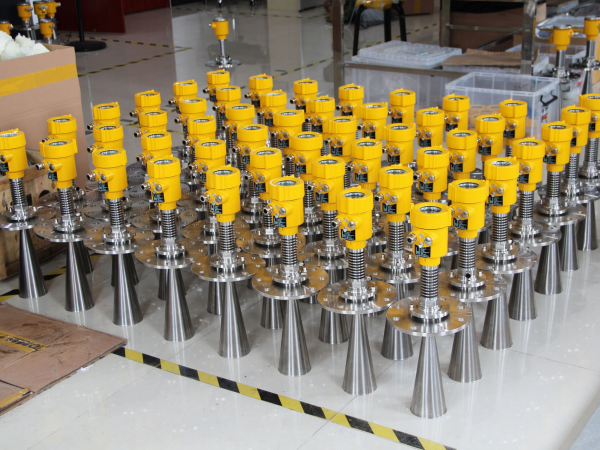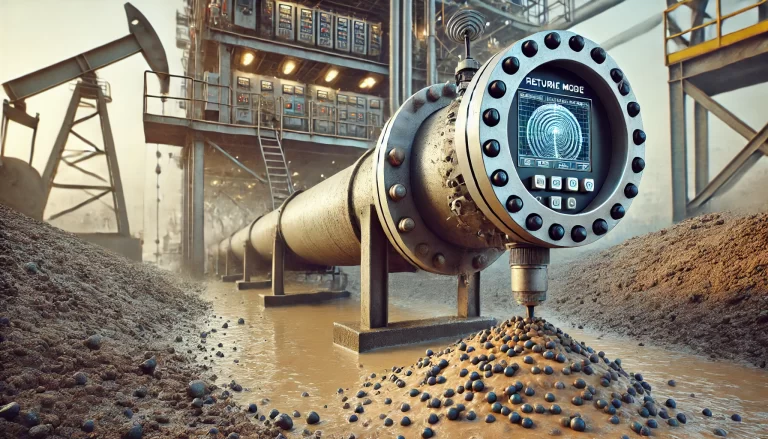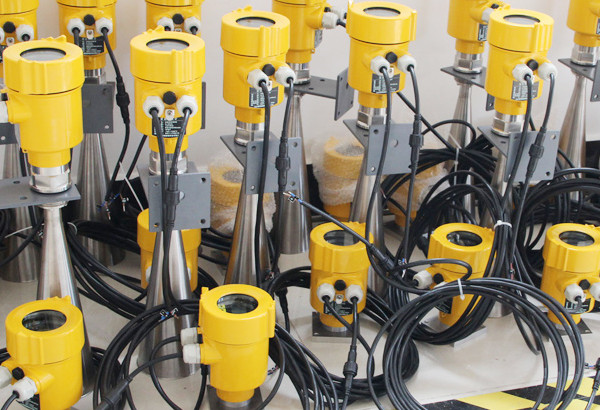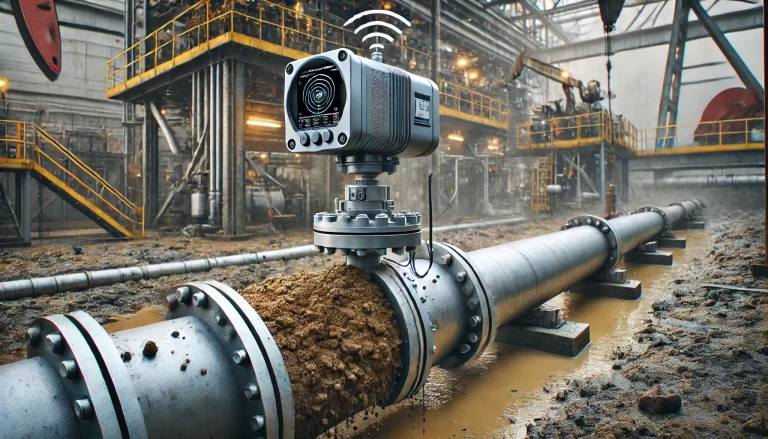Introduction
In oil extraction operations, precise liquid level measurement plays a critical role in ensuring efficient and safe drilling activities. Monitoring the fluid levels in the return pipeline for drilling mud (or drilling fluid) is particularly essential for maintaining operational stability. Advanced radar level meters have become indispensable for such applications due to their accuracy and reliability. This article explores the application of radar level meters in measuring drilling mud levels in return pipelines and highlights their technical advantages.

Drilling Mud and the Role of Return Pipelines
Drilling mud, also referred to as drilling fluid, is a specialized mixture designed to:
- Cool the drill bit during operation.
- Remove cuttings generated by drilling.
- Balance formation pressure to prevent blowouts.
- Stabilize wellbore walls.
The performance of drilling mud significantly impacts drilling efficiency and safety. Once used, the drilling fluid circulates back through the return pipeline to a mud treatment system for purification and reuse. Accurate monitoring of the fluid levels within the return pipeline is vital to ensure the continuous and efficient recycling of the drilling mud.

Working Principle of Radar Level Meters
A radar level meter is a non-contact measurement instrument that operates on the principle of time-of-flight. It sends microwave signals towards the fluid surface and measures the time taken for the reflected signals to return. The time delay between emission and reception allows the instrument to calculate the fluid level with high precision.
When microwaves encounter a surface with a different dielectric constant, part of the signal reflects back to the sensor. Unlike other measurement methods, radar meters remain unaffected by fluid density or temperature variations. Additionally, they show strong resistance to environmental interference, including vapor, foam, or dust.

Key Advantages of Radar Level Meters
Non-contact Measurement:
As the radar sensor does not come into direct contact with the fluid, it eliminates the risks of mechanical wear or chemical corrosion, providing long-term stability and reliability for monitoring.High Accuracy and Reliability:
Radar meters offer millimeter-level accuracy, supporting the precise control needed for sensitive drilling operations.Wide Adaptability:
Regardless of the complexities of drilling environments or variations in drilling fluid types, radar meters consistently perform at optimal levels.Easy Maintenance and Integration:
Many radar level meters come with intelligent self-diagnostic capabilities, facilitating remote monitoring and troubleshooting. Additionally, these meters integrate seamlessly with existing automation systems.
Application Example in an Oilfield
A high-performance radar level meter was deployed at a particular oilfield to monitor fluid levels in the drilling mud return pipeline. The real-time data provided by the meter enabled operators to fine-tune the mud system’s parameters, ensuring that both the quality and quantity of the drilling fluid remained at optimal levels throughout the operation. The use of radar technology not only reduced downtime caused by unexpected fluid level fluctuations but also enhanced overall operational efficiency.

Conclusion
Radar level meters have emerged as the preferred solution for measuring fluid levels in drilling mud return pipelines. Their non-contact design, precision, adaptability to challenging conditions, and easy maintenance contribute to improved safety and efficiency in drilling operations. Furthermore, radar meters offer valuable support for the digital transformation of the oil industry, ensuring more accurate control and monitoring across all stages of the drilling process.
By adopting radar level measurement technology, oilfields can achieve enhanced operational stability, reduce risks, and unlock higher productivity, aligning with the industry’s goals for sustainability and technological advancement.
